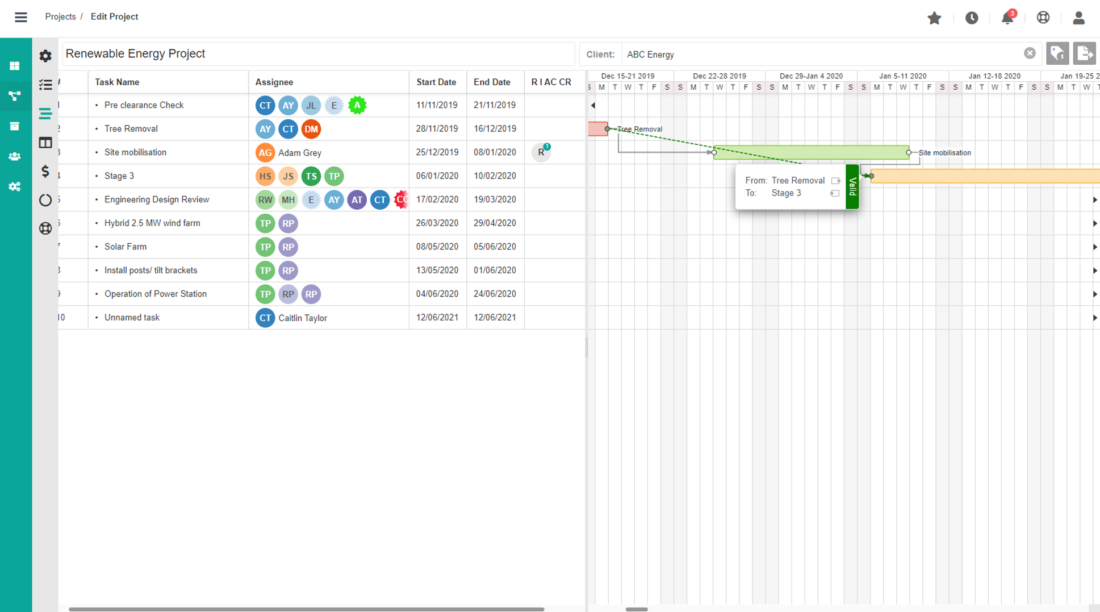
5 Best Practices for Resource Allocation and Forecasting
The term resource varies from a person through to the collective term for people, equipment, and budget. When introducing a solution for planning, scheduling and task management, a greater level of flexibility is introduced. Anyone who has previously used spreadsheets for managing planning, scheduling of resources knows the manual effort involved in updating and handling variations. It’s not easy!
The level of flexibility offered by a solution means that temporary resources of any kind can be plugged in to start building a model. The model is then refined as the due dates draw closer and there is more certainty.
Here are our 5 best practices for resource allocation and forecasting:
1. Start with Shell’s
We recommend when starting with long term, high level forecasting of 3 months out or longer, to use “shell” people, teams or crews. These have the right skills but are un-named. By doing this, you’ll easily see if you have enough skills to service the upcoming workload.
This is the most common opportunity missed and results in over resourcing, typically with expensive labour through contractors or overtime. The flow on impacts here are significant with not just financial implications but also the mindset of your staff. Last minute phone calls to ask people to work that disrupt their personal lives or instilling a mentality of overtime rates are the norm.
2. Break it down
Within your high level forecast, the work tasks and activities need to be sorted and filtered. Different industries have more or less complex task structures and dependencies but the effort still needs to be known. Once that’s been done, applying seasonal block outs helps arrive at a total time available to perform the work against the total work time required. There may be other factors or external events to consider at this stage such as State or national holidays and Government issued dates, so it is worth ensuring your solution has these dates plugged in or entered.
At this stage we can start to see a forecast taking shape based on work activities to be performed and available time to perform them.
3. Budget Alignment
The next part is to look at how this forecast starts to fit with your budget. Depending on how your work tasks are structured and the available historical information, costs may be captured against the previous work performed. If this isn’t available, a cost base will need to be built more manually.
As an example, let’s say a work task takes 8 hours to perform and the total loaded cost is $100 per hour, there is then a baseline of $800 for the task. This can be applied and arrived at in different ways.
4. Align the baseline
The next step is to overlay the baseline cost for the work task with the work task A simple example would be that all work tasks are the same, however in reality there will be various work task types. Adding another dimension is the time to perform the work task may vary based on external factors such as location, weather, skills, or experience. In this scenario, an average should be taken if there is not enough historical data. For example, changing a power pole in the summer versus winter or on a hill versus a roadside.
At this stage tasks may need to be removed from that budget period, if there is not enough budget available or additional budget sought from elsewhere.
5. Name your Staff
Assign resources by name. As the dates draw closer, your job readiness activities are being completed such as permits, approvals, customer notifications and booking of equipment. At this stage you can start to update the “Shells” of skills to named staff.
Based on the work type and any industry legislation, this may need to be done with a minimum time frame such as 30 days, so your staff know where they are going to be and when. Inside this final window, tweaking the plan should be easy to handle the unexpected such as unplanned staff leave or last minute customer changes.
Time confirming for all parties to the tasks provides for greater visibility in the months and years ahead for the next forecasting cycle.
Takeaway Tip
IOP is about accessibility for all. If you’re using MS Excel or paper to manage your workforce planning, see how easy it is to put into Dusk IOP and then deliver value.
Collaboration in your organisation can start today with a tactical but strategically scalable solution, such as the Intelligent Operations Platform (Dusk IOP) from Dusk Mobile. For breaking down silos, the Dusk IOP is an industry leading collaborative workforce management platform. It connects your staff on any device, any time and in any location. Integrate your favourite products quickly and easily for real time collaboration amongst your teams.
Automating work functions and delivering a connected experience has never been easier and achieving productivity improvements can start tomorrow.
A great workforce management (WFM) software solution that includes program management through to in field jobs, the Dusk IOP provides you with an easy way to build automation into your daily work management processes. The creation and management of your business should be via user-friendly ’No Code’ – allowing your business users to maintain and evolve the digitization without the need for additional IT or development costs.
Avoid solutions that increase support overheads on your IT department to maintain them, or (worse still) embed a dependency on the provider to deliver ongoing additional professional services to continue servicing your evolving needs.
So how do you get started? Speak to the team at Dusk about our experience in delivering dynamic workforce management software to your business. Using bite size deliverables and incremental change, your business can transform progressively. Clean, secure integration with a polished user interface to design and build your baseline quickly.
This leads to improved productivity and visibility for your workforce. Connect to your existing systems to create Customer 360 view that can be shared between all authorised parties.
If you’d like to find out more on visibility, consistent messaging, workflows, automation with project management and easy integration for your teams or business, get in touch today with our friendly team.
Any questions, our community is here to help in the Support & Updates area!
Try a 14 day free trial of the Dusk IOP and start seeing the benefits of automated workflows, informed decision making and a single, comprehensive view of your business in real time. Start collaborating today.
Start your free trial today
Not sure where to start? Request a demo from our team via the button:
Request a Demo
Or you just have some questions:
Email: mobile @ duskmobile.com
Phone: 03 8679 2208
Other posts you may find useful:
5 benefits of accessing your information from one data platform
3 areas to introduce and maintain collaboration in your workplace



